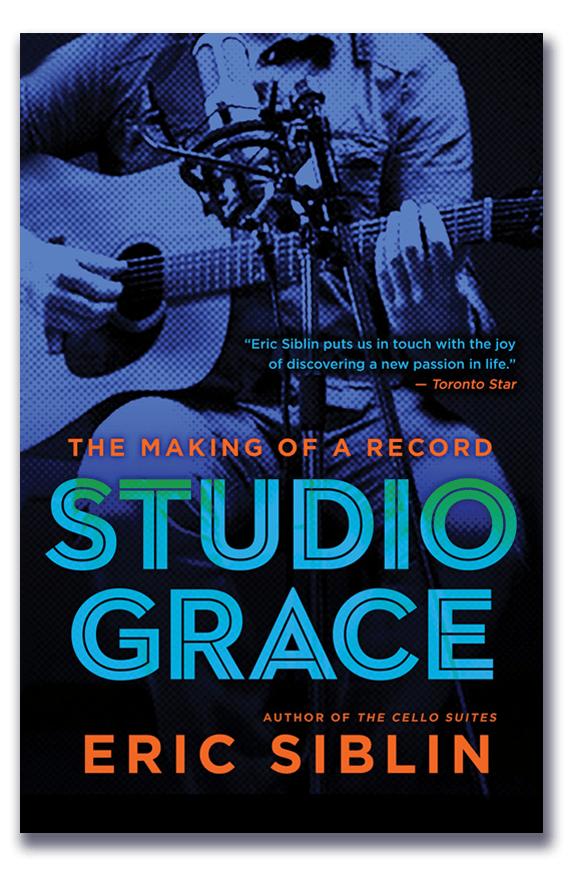THE CELLO SUITES
THE CELLO SUITES
The Cello Suites tells a multi-layered story of mystery, passion, history, and politics surrounding an epic piece of music by Johann Sebastian Bach. The award-winning book was a No. 1 national best-seller in Canada and has been translated into nine languages.

STUDIO GRACE
STUDIO GRACE
Studio Grace chronicles a year-long adventure in which Eric Siblin records a dozen original pop songs while musing about creative inspiration. Along the way we meet veteran instrumentalists, producers with clashing philosophies, and a clutch of superb singers ranging from R&B performer Shaharah to YouTube teen sensation Hayley Richman. The book's publication coincides with the release of an album of the same name. The songs can be found on iTunes, streaming sites, and on this website.

Journalism
JOURNALISM
POLITICS
PROFILE
Rosie the Red Takes Power
READ THE PDF
ARCHITECTURE
Designs on Jerusalem
READ THE PDF
OBITUARY
Passion Before Reason
READ THE PDF
ELECTION COVERAGE
Separatist Fortress
READ THE PDF
NEWS
Quebec Cliffhanger
READ THE PDF
ANALYSIS
Where to Draw the Line
READ THE PDF
Shrinking Heads of State
READ THE PDF
CULTURE
LEISURE
Holy Rollers
READ THE PDF
BOOK REVIEW
Presssed Into Service
READ THE PDF
Factual Fiction
READ THE PDF
MUSIC
PROFILE
Uncommon Virtuoso
READ THE PDF
Showman in the Shadows
READ THE PDF
AUDIO FILE
There is no Accounting for Musical Taste
READ THE PDF
INTERVIEW
Punk Paleontology
READ THE PDF
Björk's Dream
READ THE PDF
NEWS CONFERENCE
Exporting World Rhythm
READ THE PDF
RAVE
Escape from Electronica
READ THE PDF
CONCERT REVIEW
Hanson Plays to Hormones
READ THE PDF
REHEARSAL
The Basement Tapes
READ THE PDF
FUGUE
Neo-Punk Meets Old Folk
READ THE PDF
About the author
ERIC SIBLIN
Eric Siblin is a writer with interests in history, music, hockey, and olive oil. Educated at Concordia University in Montreal, he has worked as a staff reporter for The Canadian Press and The Montreal Gazette. His first book, The Cello Suites, explores the multi-layered story of an epic composition by Johann Sebastian Bach. The Cello Suites was a No. 1 national best-seller in Canada and named an Economist Book of the Year for 2010. It won the Mavis Gallant Prize for Non-Fiction, and the McAuslan First Book Prize, and was shortlisted for the Governor General’s Award (Non-Fiction), the Writers’ Trust of Canada Non-Fiction Prize, and British Columbia’s National Award for Canadian Non-Fiction. It has been translated into nine languages. Studio Grace, published in 2015 to coincide with an album of the same name, is his second book.
CONTACT